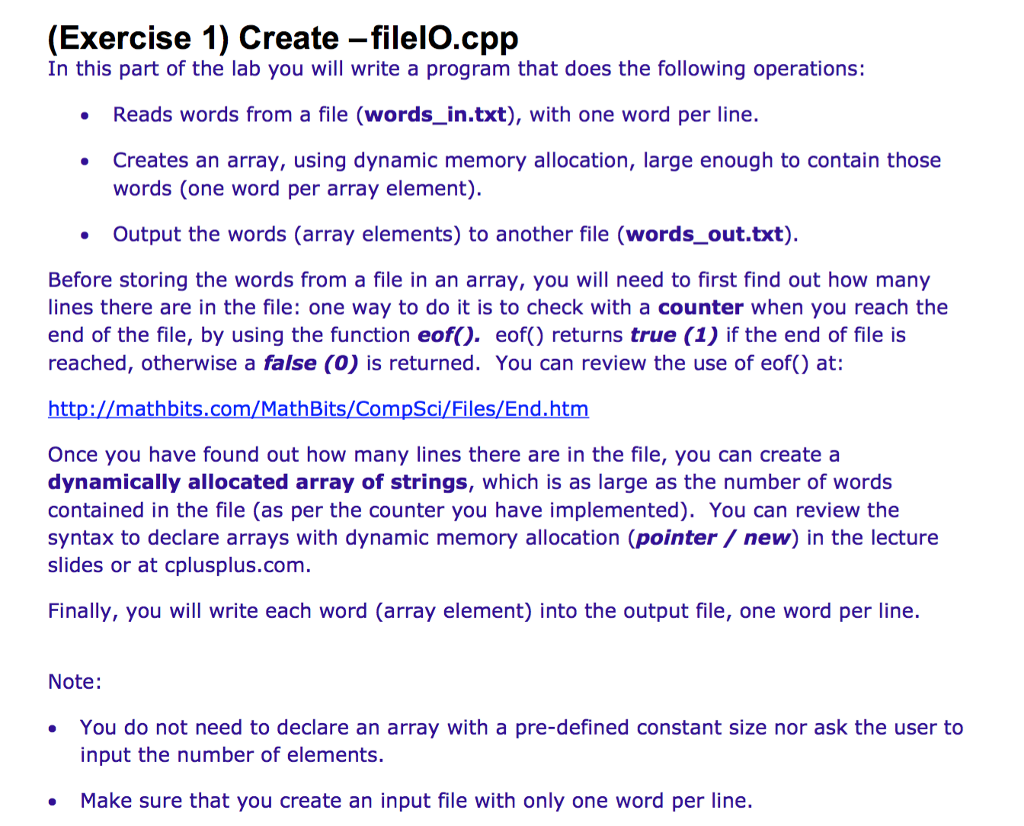
In this part of the lab you will write a program that does the following operations: Reads words from a file (words_in.txt), with one word per line. Creates an array, using dynamic memory allocation, large enough to contain those words (one word per array element). Output the words (array elements) to another file (words_out.txt). Before storing the words from a file in an array, you will need to first find out how many lines there are in the file: one way to do it is to check with a counter when you reach the end of the file, by using the function e of(). E of() returns true (1) if the end of file is reached, otherwise a false (0) is returned. You can review the use of e of() at: http://mathbits.com/MathBits/CompSci/Files/End.htm Once you have found out how many lines there are in the file, you can create a dynamically allocated array of strings, which is as large as the number of words contained in the file (as per the counter you have implemented). You can review the syntax to declare arrays with dynamic memory allocation (pointerew) in the lecture slides or at cplusplus.com. Finally, you will write each word (array element) into the output file, one word per line. In this part of the lab you will write a program that does the following operations: Reads words from a file (words_in.txt), with one word per line. Creates an array, using dynamic memory allocation, large enough to contain those words (one word per array element). Output the words (array elements) to another file (words_out.txt). Before storing the words from a file in an array, you will need to first find out how many lines there are in the file: one way to do it is to check with a counter when you reach the end of the file, by using the function e of(). E of() returns true (1) if the end of file is reached, otherwise a false (0) is returned. You can review the use of e of() at: http://mathbits.com/MathBits/CompSci/Files/End.htm Once you have found out how many lines there are in the file, you can create a dynamically allocated array of strings, which is as large as the number of words contained in the file (as per the counter you have implemented). You can review the syntax to declare arrays with dynamic memory allocation (pointerew) in the lecture slides or at cplusplus.com. Finally, you will write each word (array element) into the output file, one word per line







